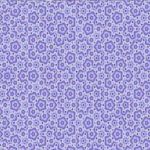EPJ B - Tiling pattern governs quasicrystals’ magnetism
- Details
- Published on 10 August 2012

Review sheds light on the underlying magnetic qualities stemming from quasicrystals’ complex structure.
Few material classes have generated as much interest as quasicrystals. In a review published in EPJB quasicrystal expert Anuradha Jagannathan, from Paris-Sud University in Orsay, France, outlines the progress to date in the theory explaining the magnetic properties of these quasicrystals.
In 2011, the fascination with quasicrystals was rekindled by the awarding of the Chemistry Nobel Prize to Daniel Schechtman for their discovery in 1984. Their structure differs from standard crystals in that they are packed in patterns that repeat in space, in an aperiodic fashion. The resulting structures exhibit a highly complex ordering with 5, 8, 10 or 12-fold symmetries, which are not manifested in periodic, classic crystals.
This review shows that by focusing on two-dimensional tiling, it is possible to study the magnetic properties of these quasi-periodic materials at the atomic scale. This article provides an overview of the specificities of 2D quasicrystal structures, including those known as Penrose (see illustration) and Ammann tilings. The author considers a model called the Heisenberg model to explain their magnetic properties compared with other types of perfectly ordered as well as disordered crystals and quasicrystals.
The author discusses the use of several simulation methods, both quantitative and numerical, to show that the magnetic state in quasicrystals is characterised by a relatively high degree of magnetic order, in which an internal characteristic of electrons, called spin, alternates between the up and down direction, described as the antiferromagnetic or Néel state. In addition, highly complex spatial distribution of local staggered magnetisation also occurs within such materials.
These theoretical predictions could be verified experimentally in the laboratory using thin films grown by deposition on a quasicrystal surface or by creating controlled artificial crystalline structures at near-zero temperature using cold atoms technology.
This was our first experience of publishing with EPJ Web of Conferences. We contacted the publisher in the middle of September, just one month prior to the Conference, but everything went through smoothly. We have had published MNPS Proceedings with different publishers in the past, and would like to tell that the EPJ Web of Conferences team was probably the best, very quick, helpful and interactive. Typically, we were getting responses from EPJ Web of Conferences team within less than an hour and have had help at every production stage.
We are very thankful to Solange Guenot, Web of Conferences Publishing Editor, and Isabelle Houlbert, Web of Conferences Production Editor, for their support. These ladies are top-level professionals, who made a great contribution to the success of this issue. We are fully satisfied with the publication of the Conference Proceedings and are looking forward to further cooperation. The publication was very fast, easy and of high quality. My colleagues and I strongly recommend EPJ Web of Conferences to anyone, who is interested in quick high-quality publication of conference proceedings.




